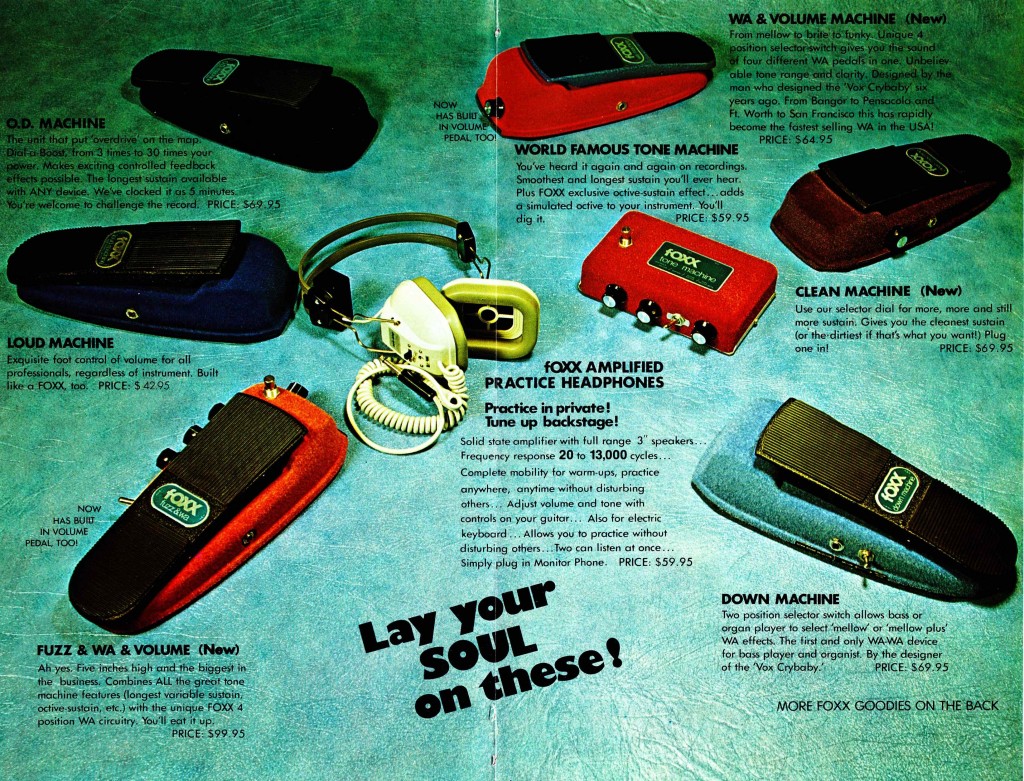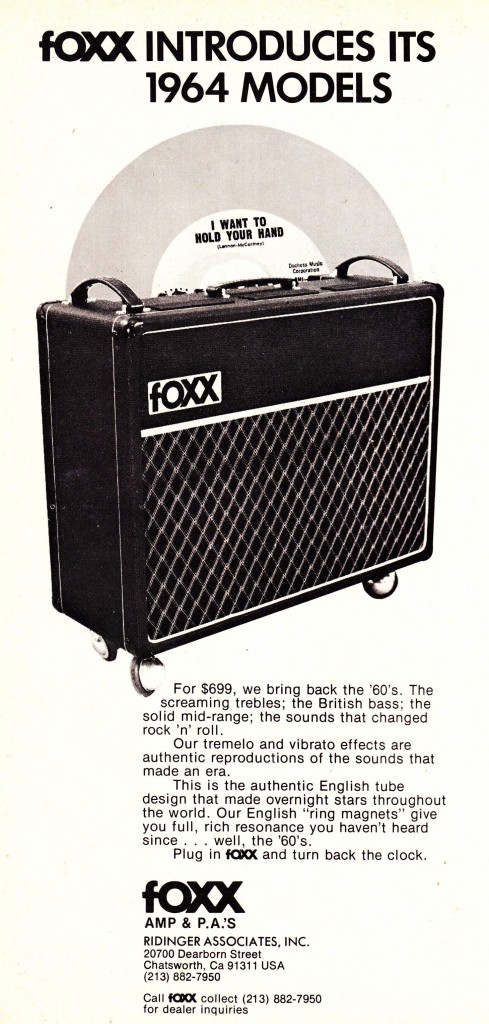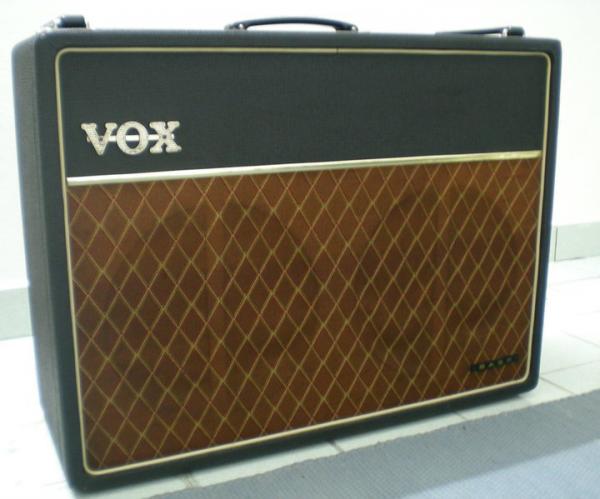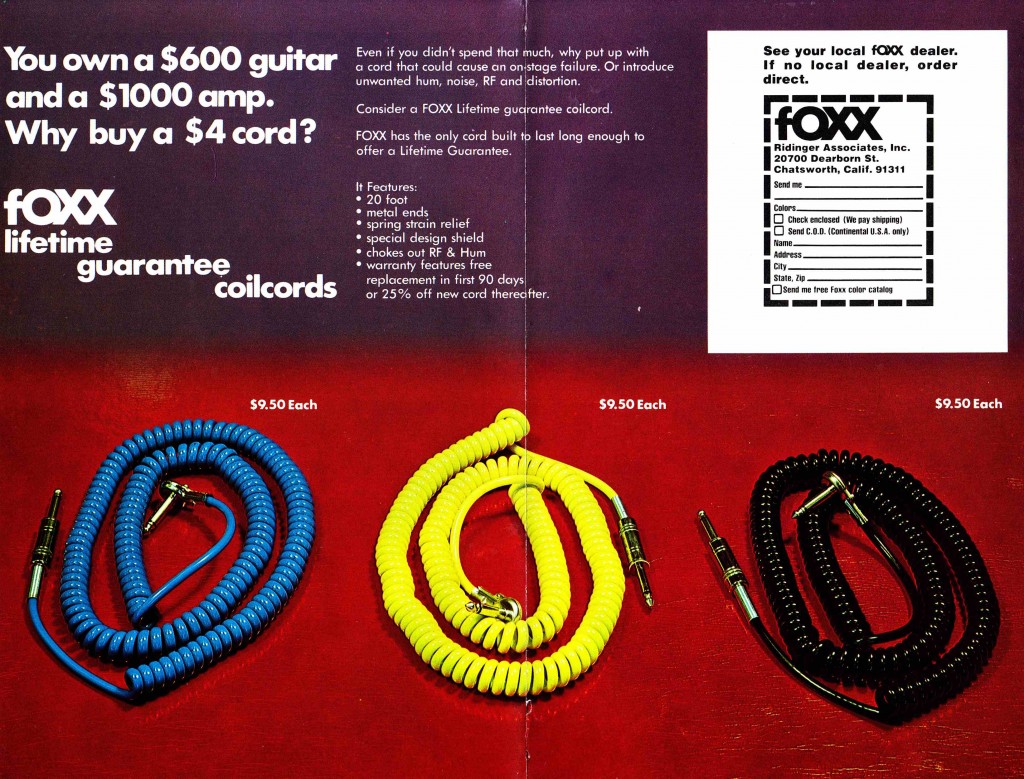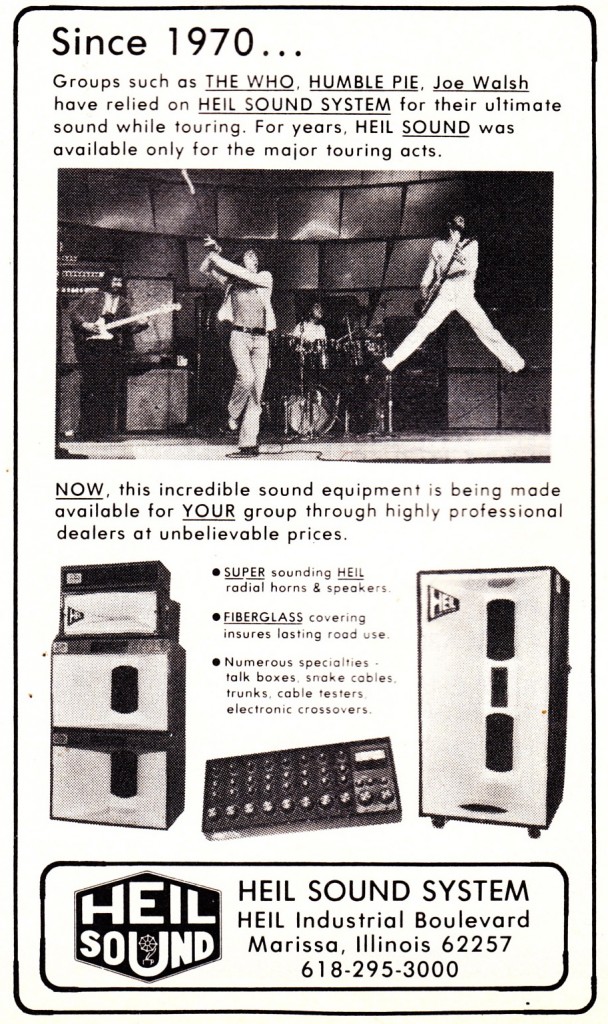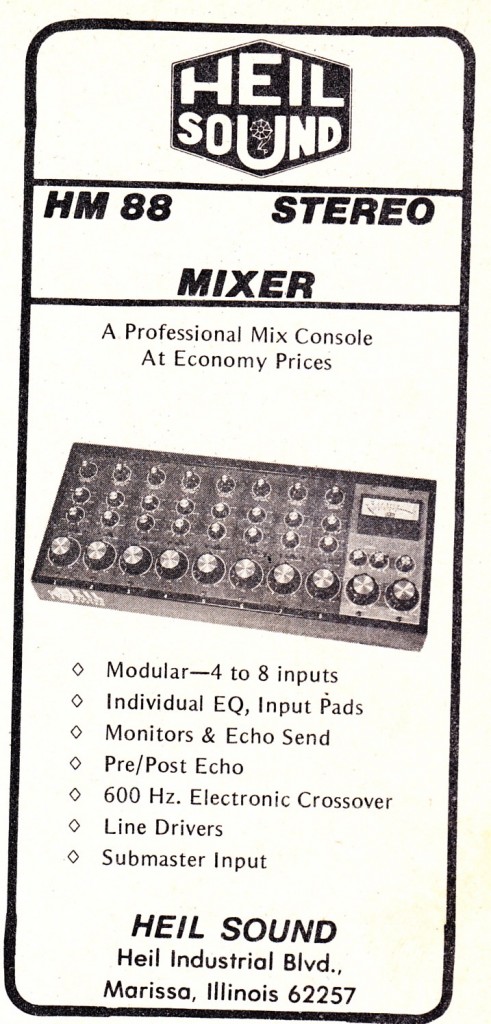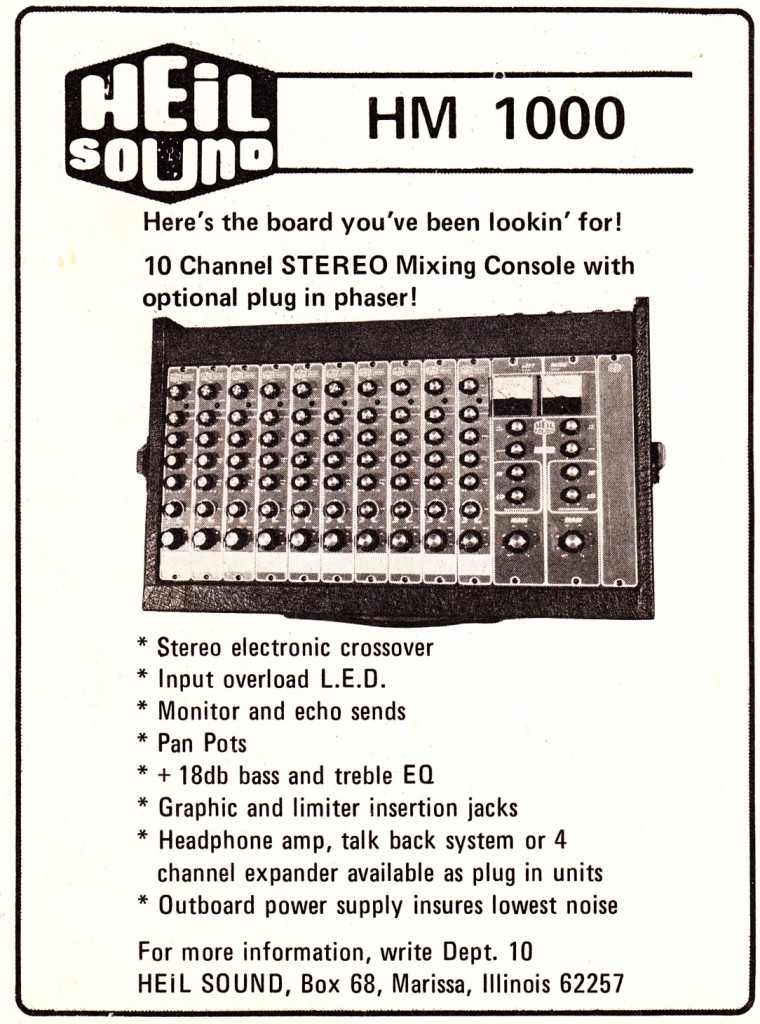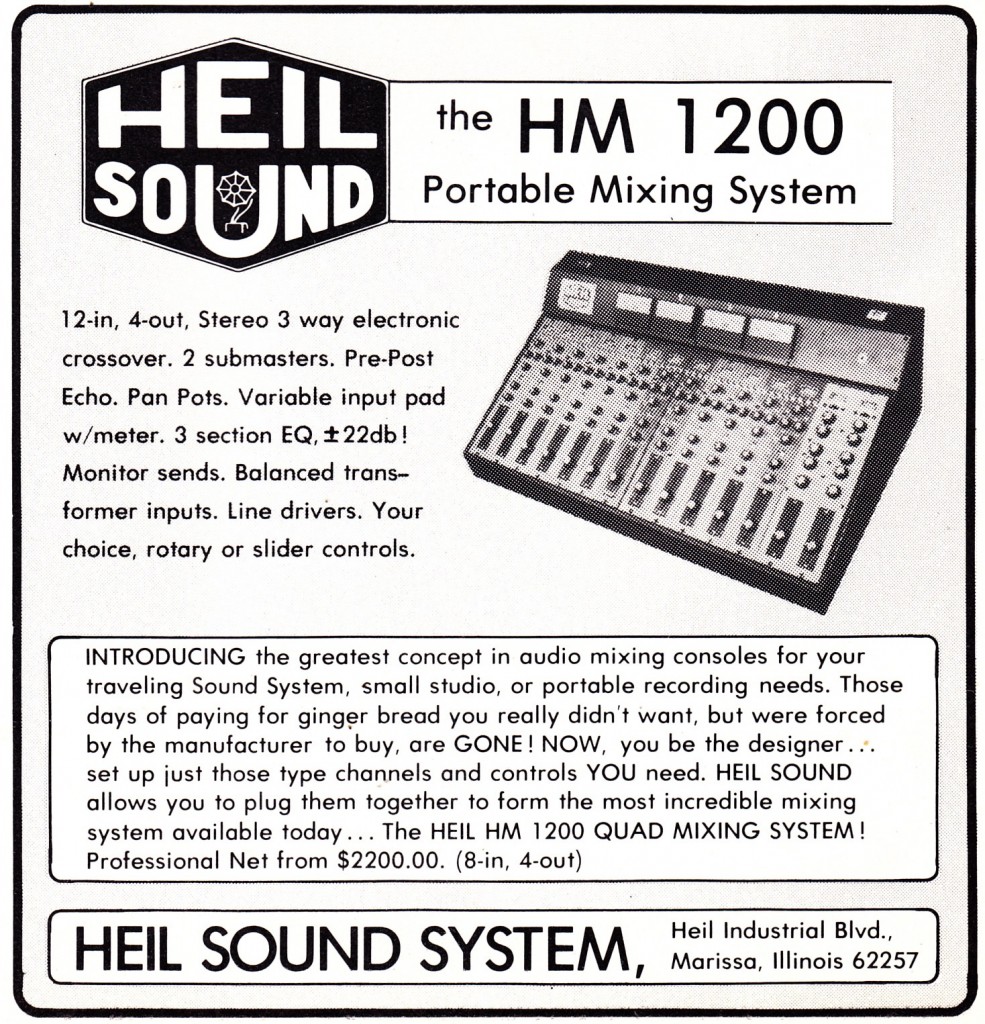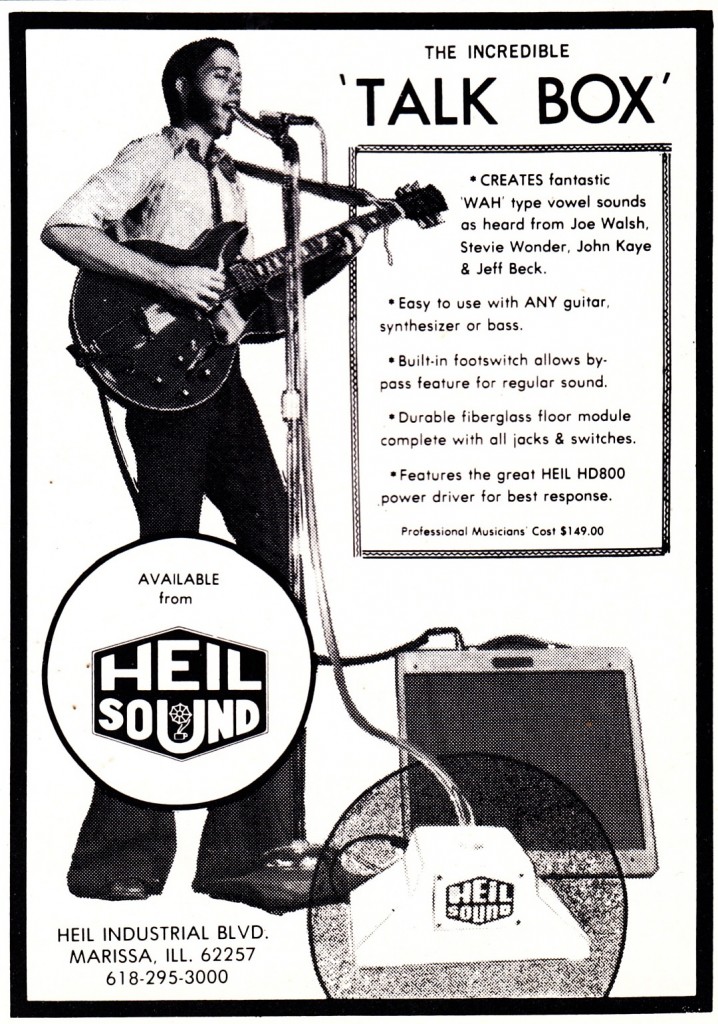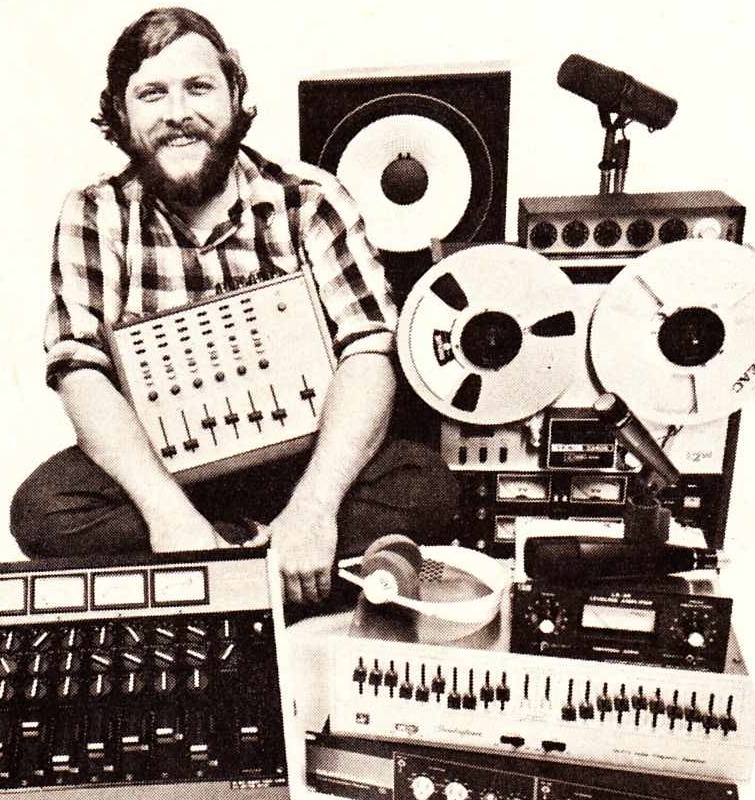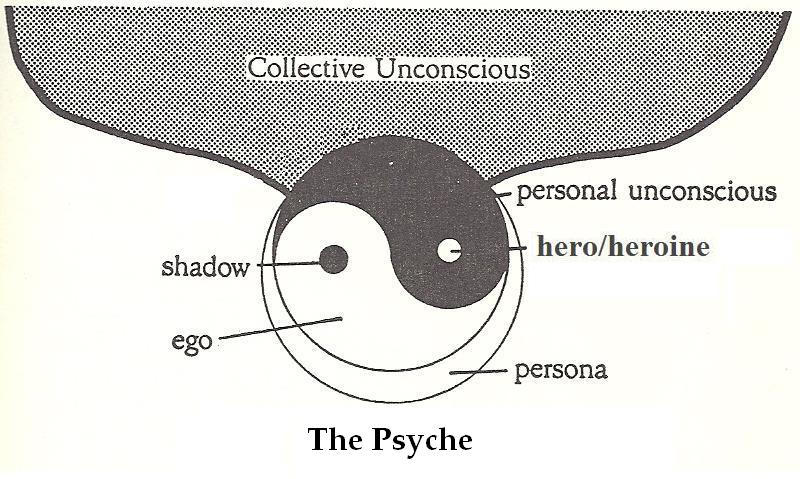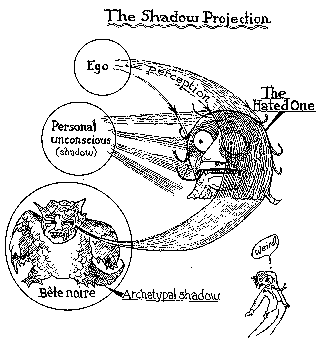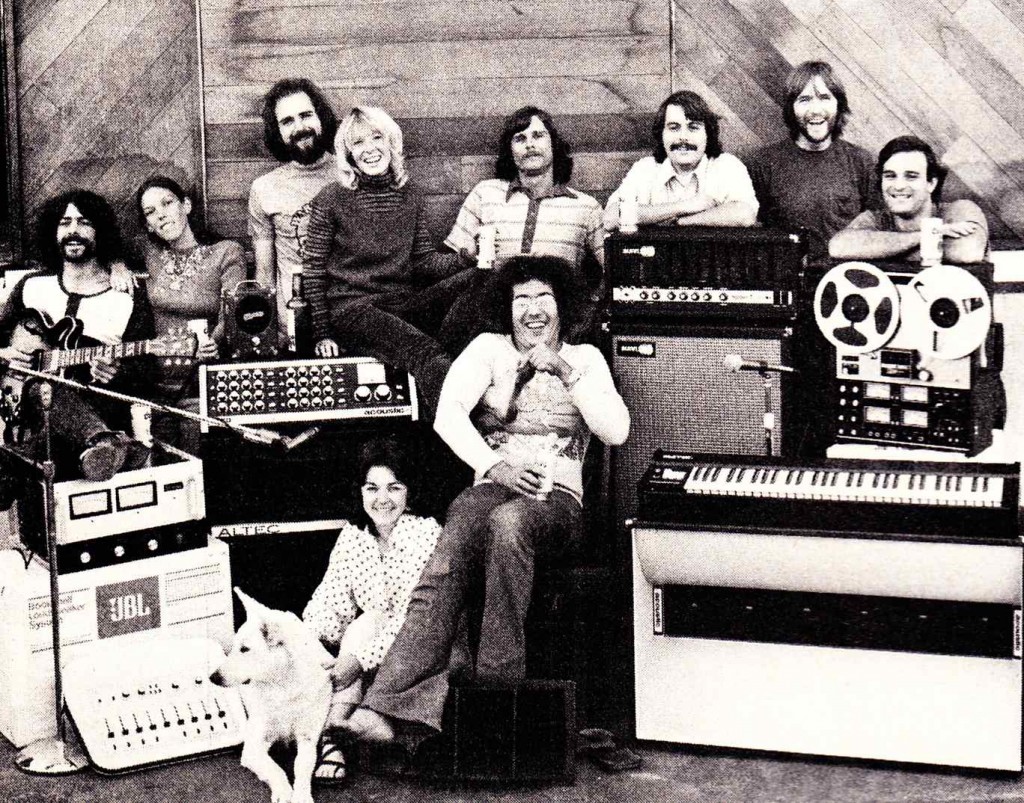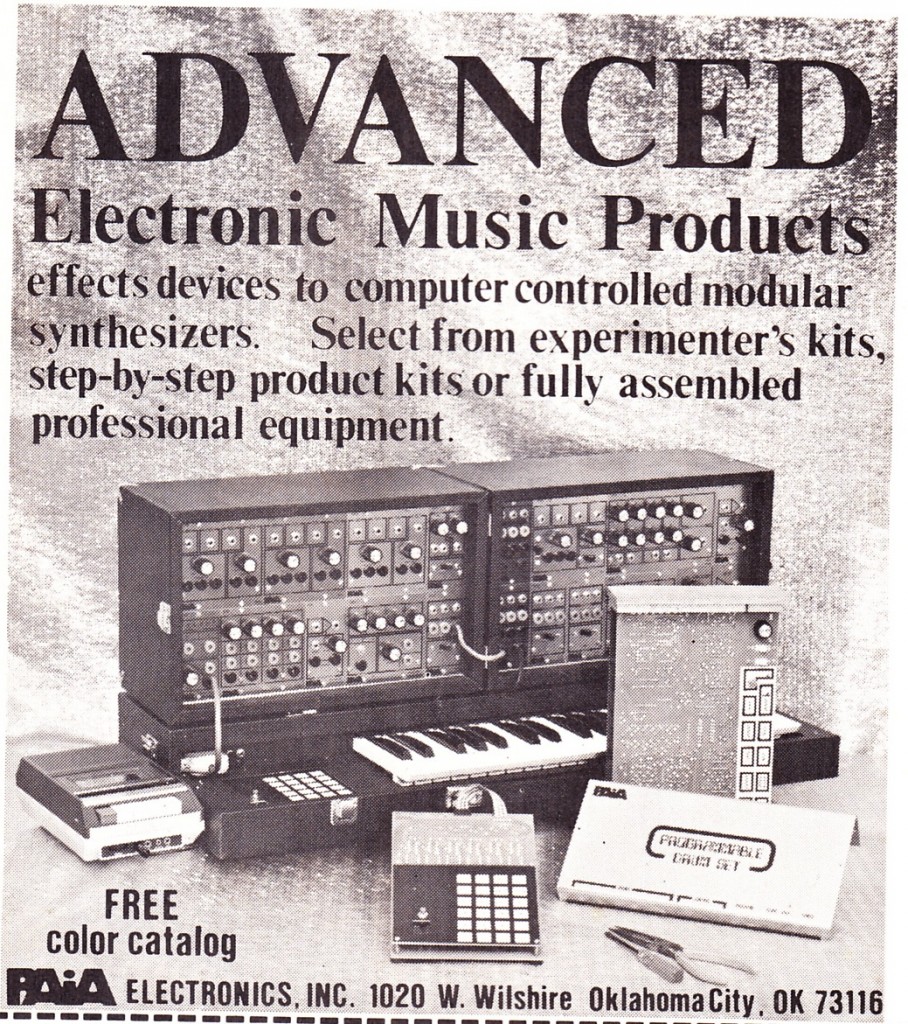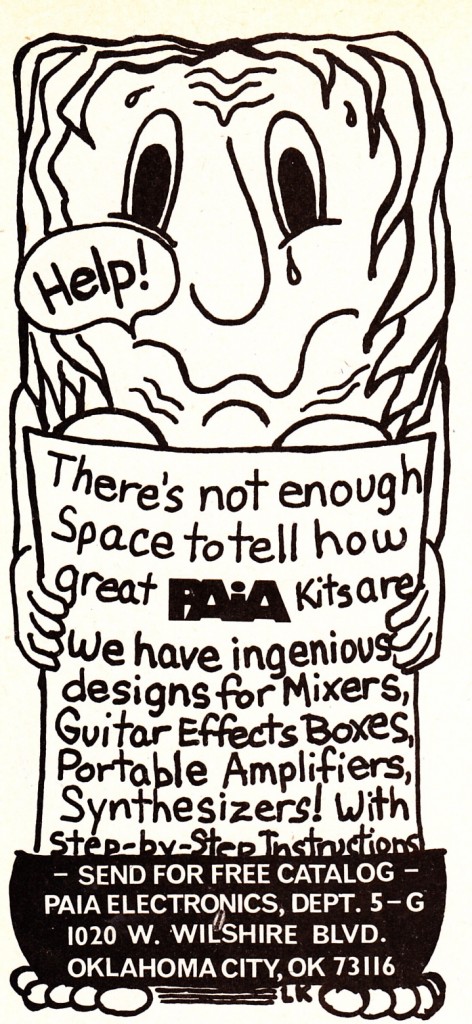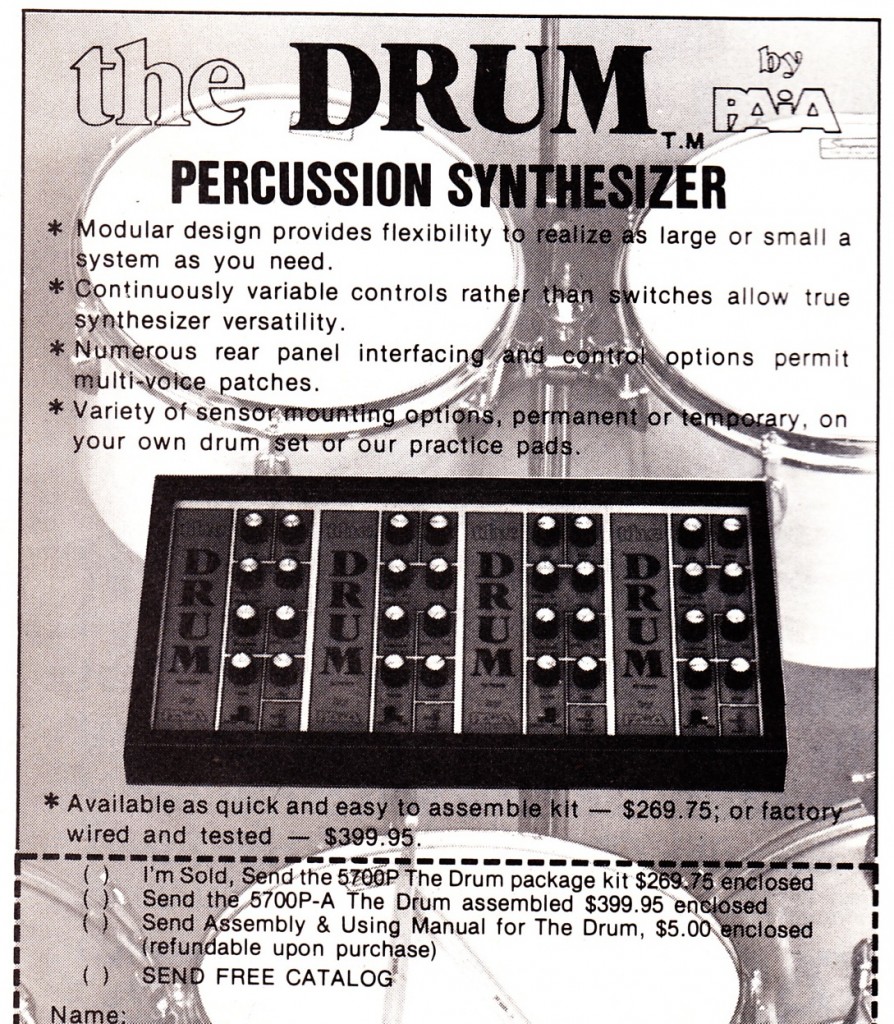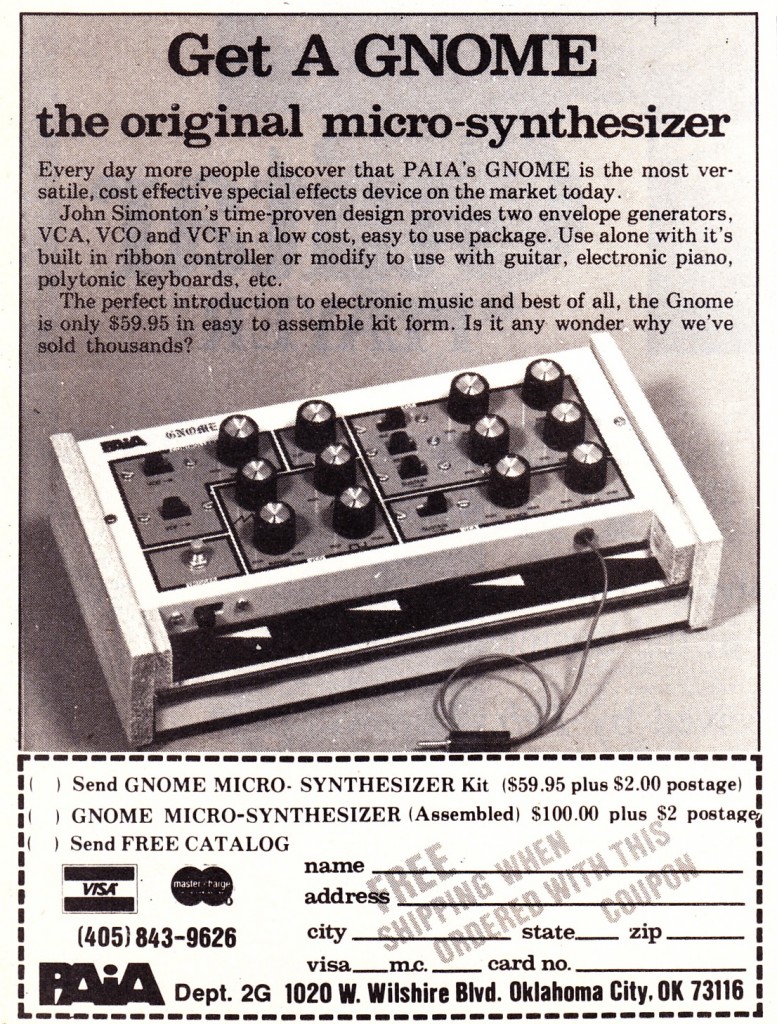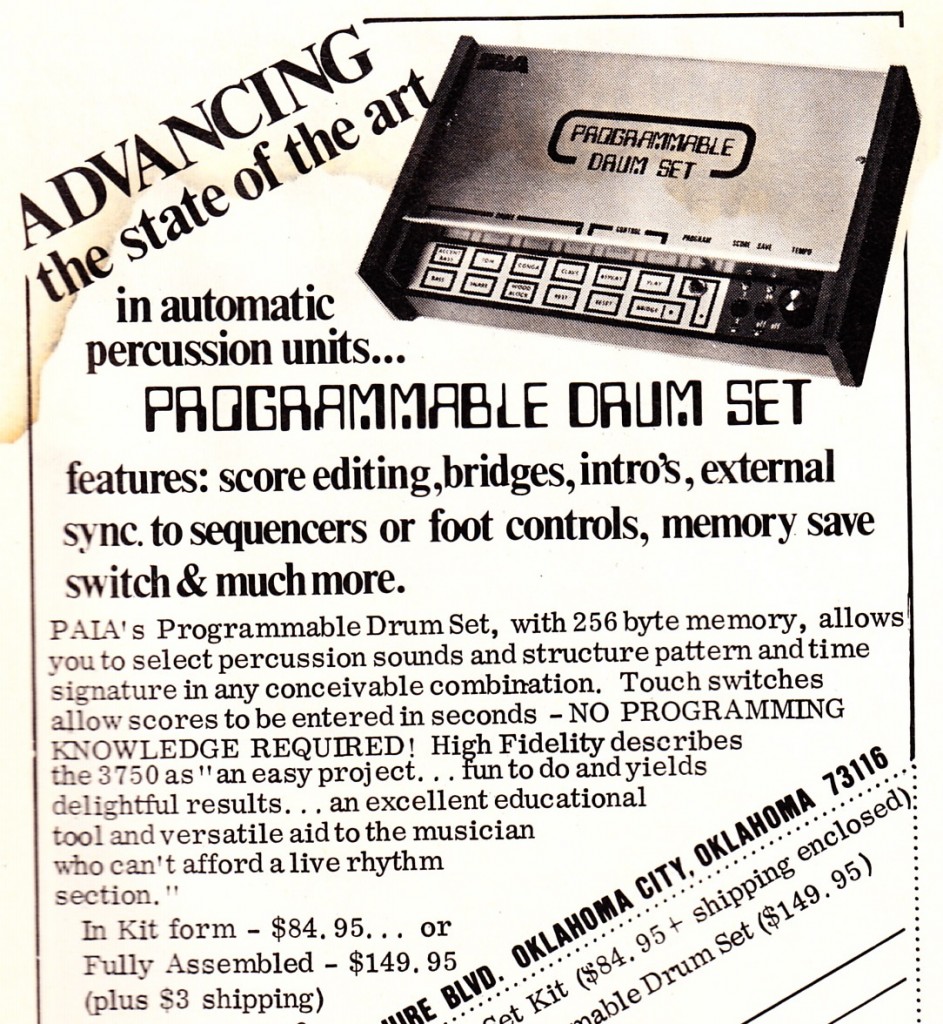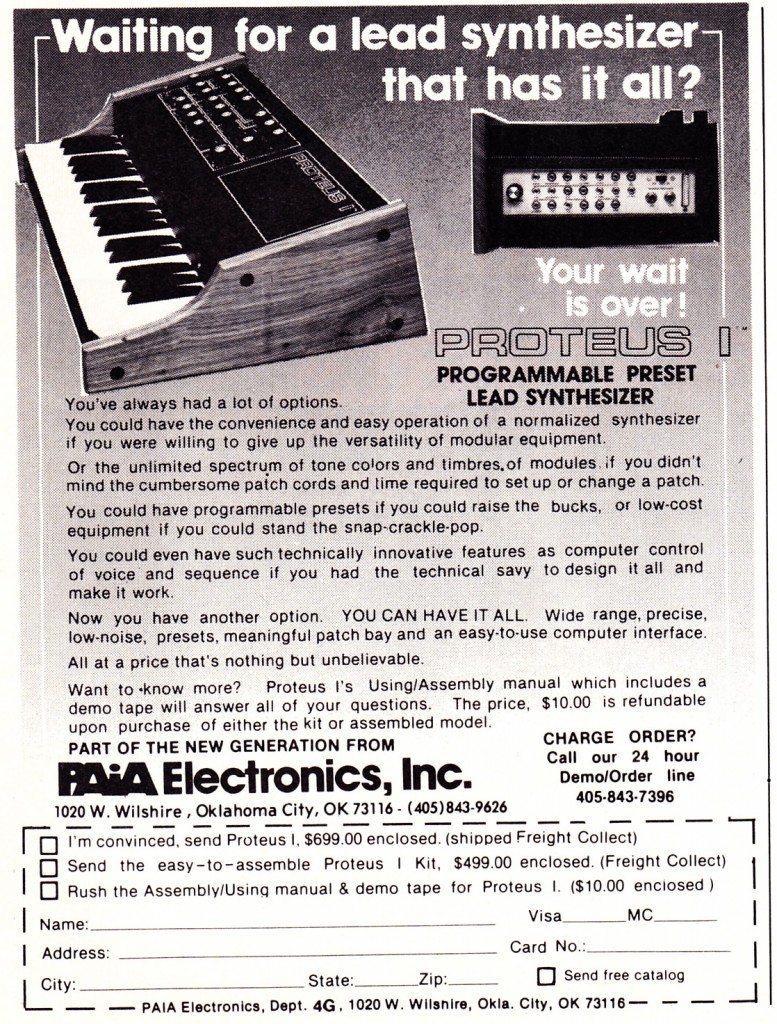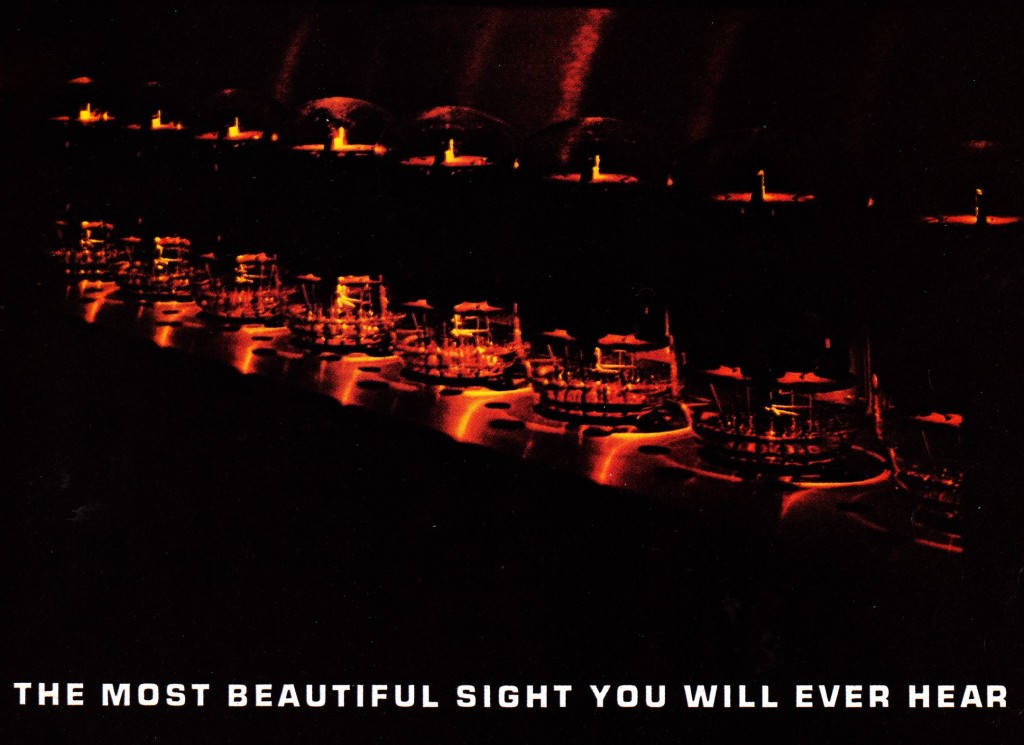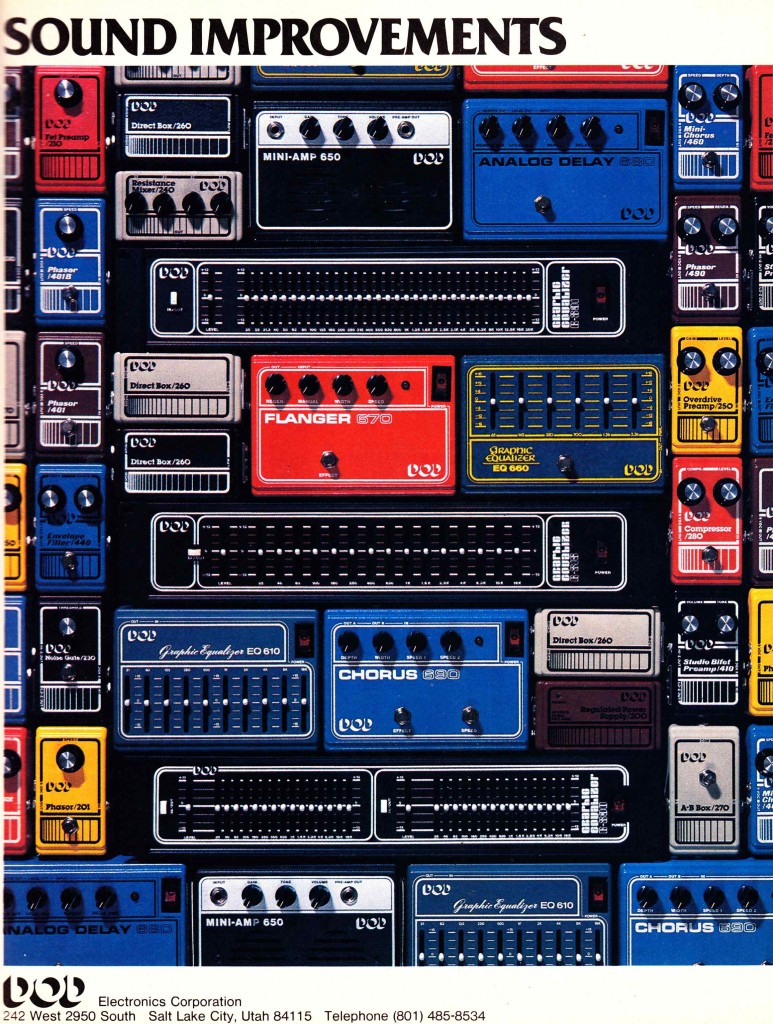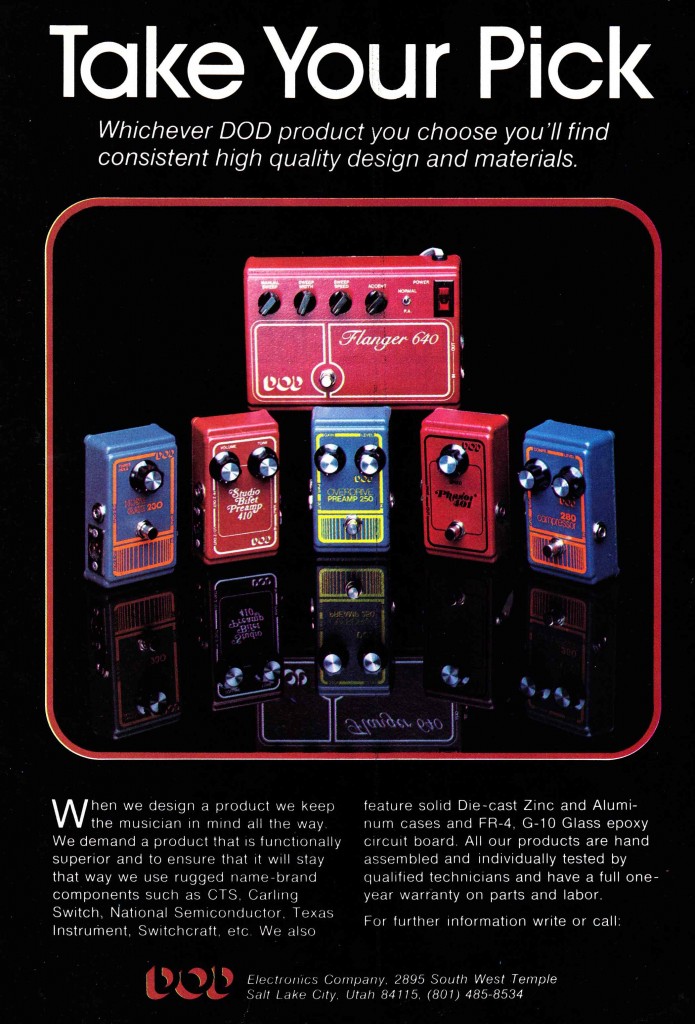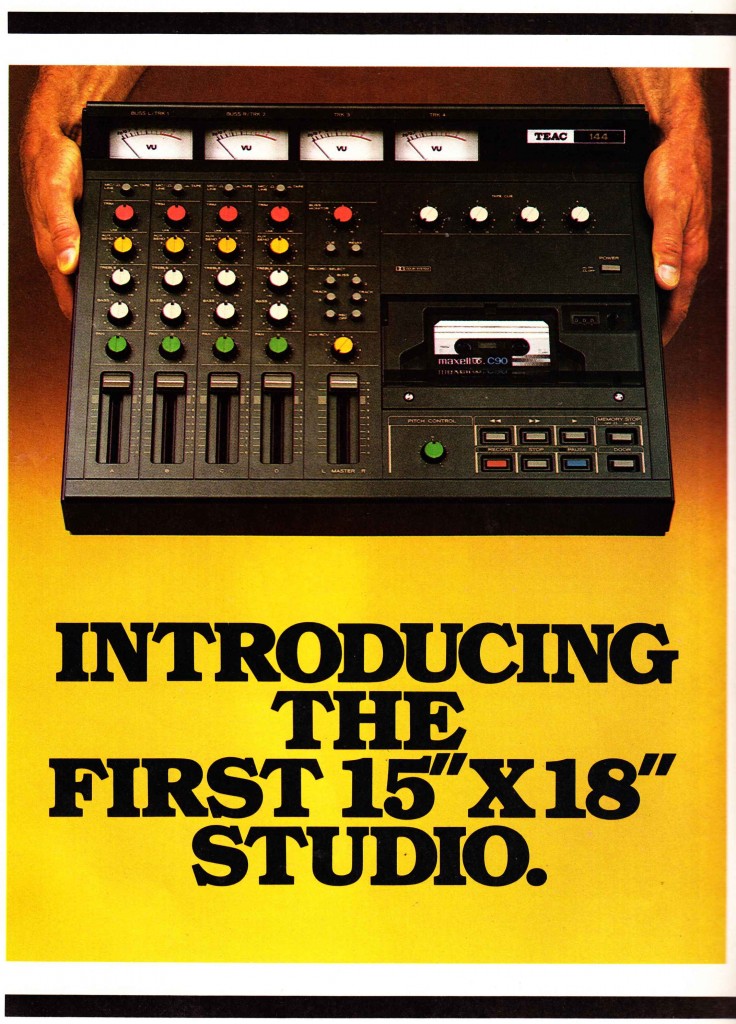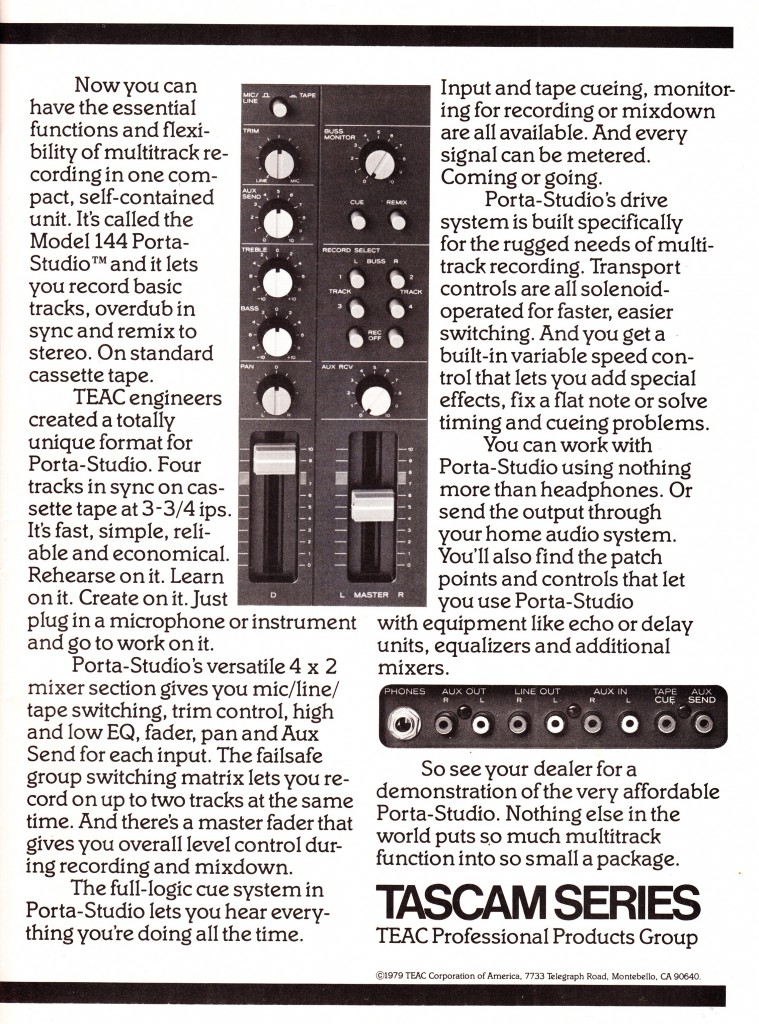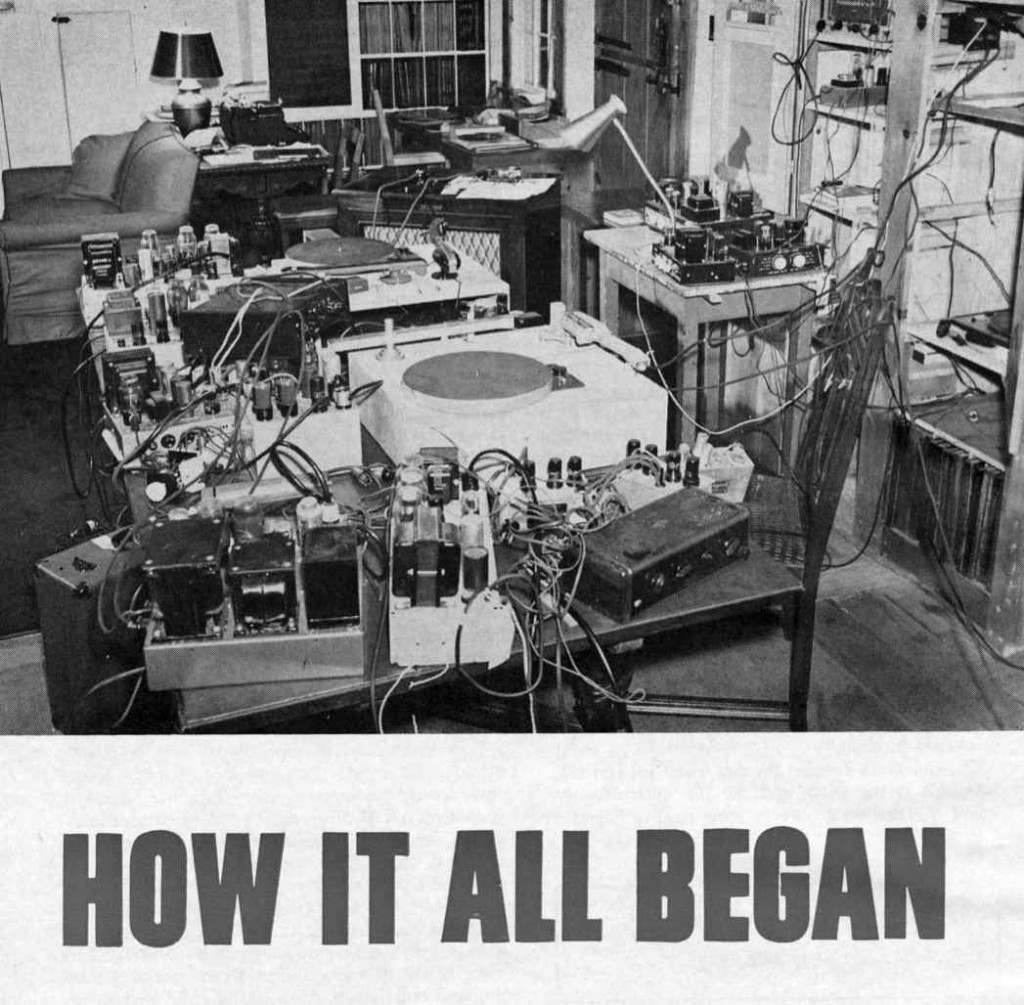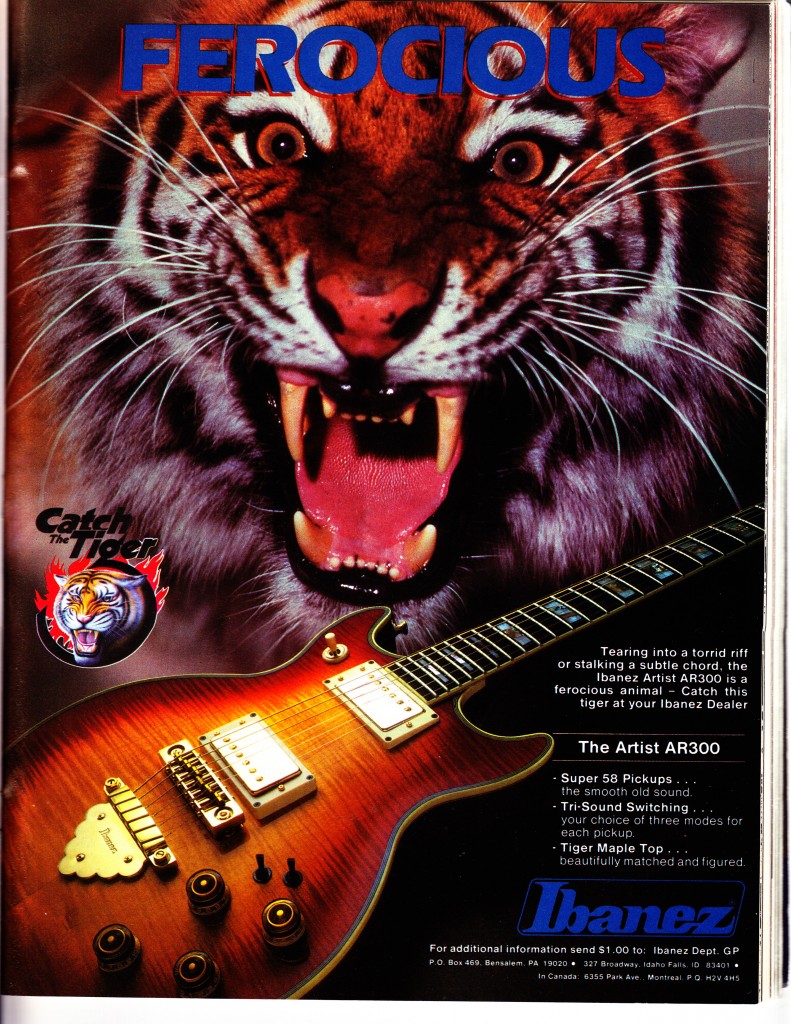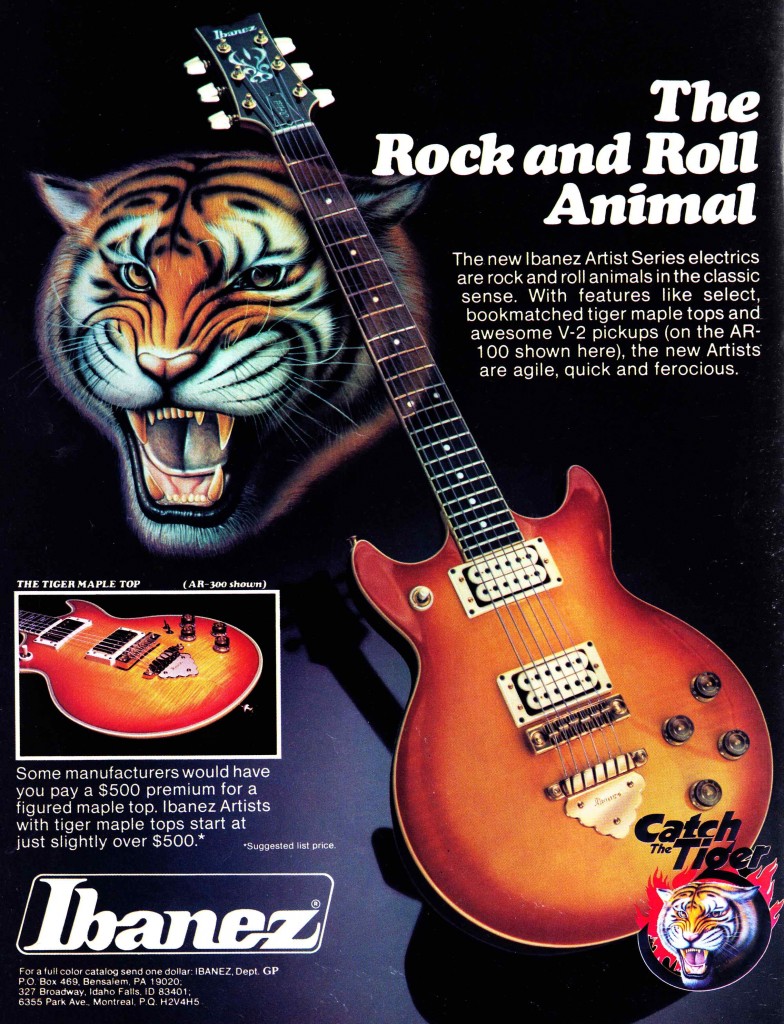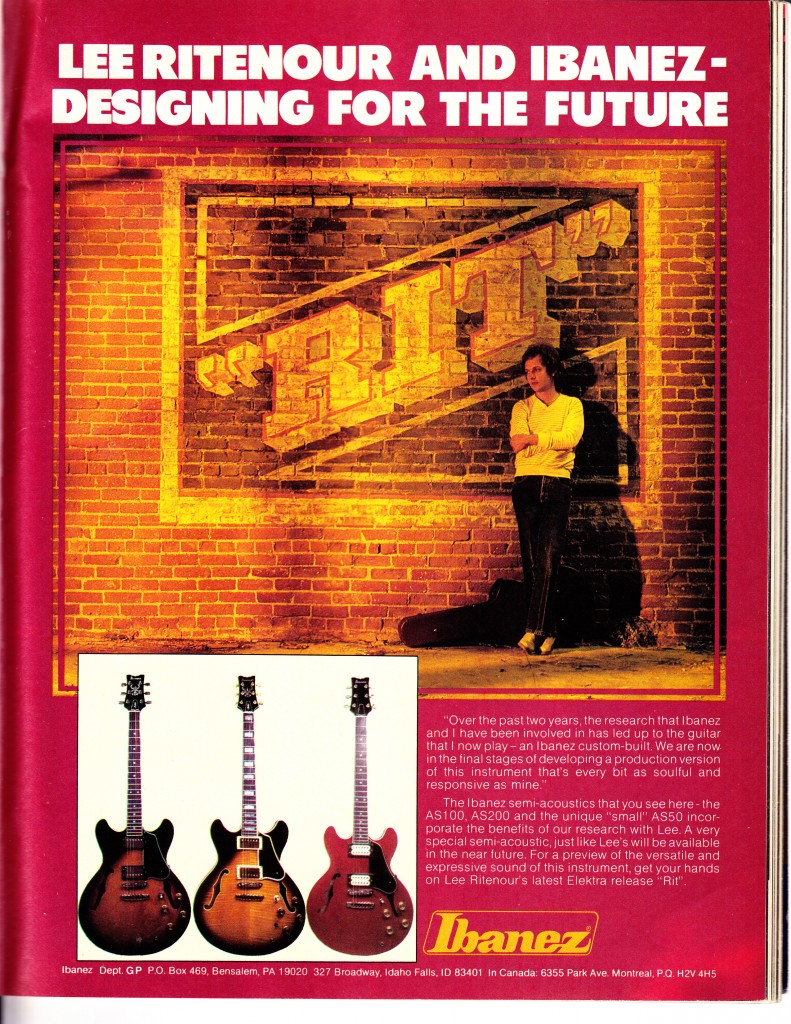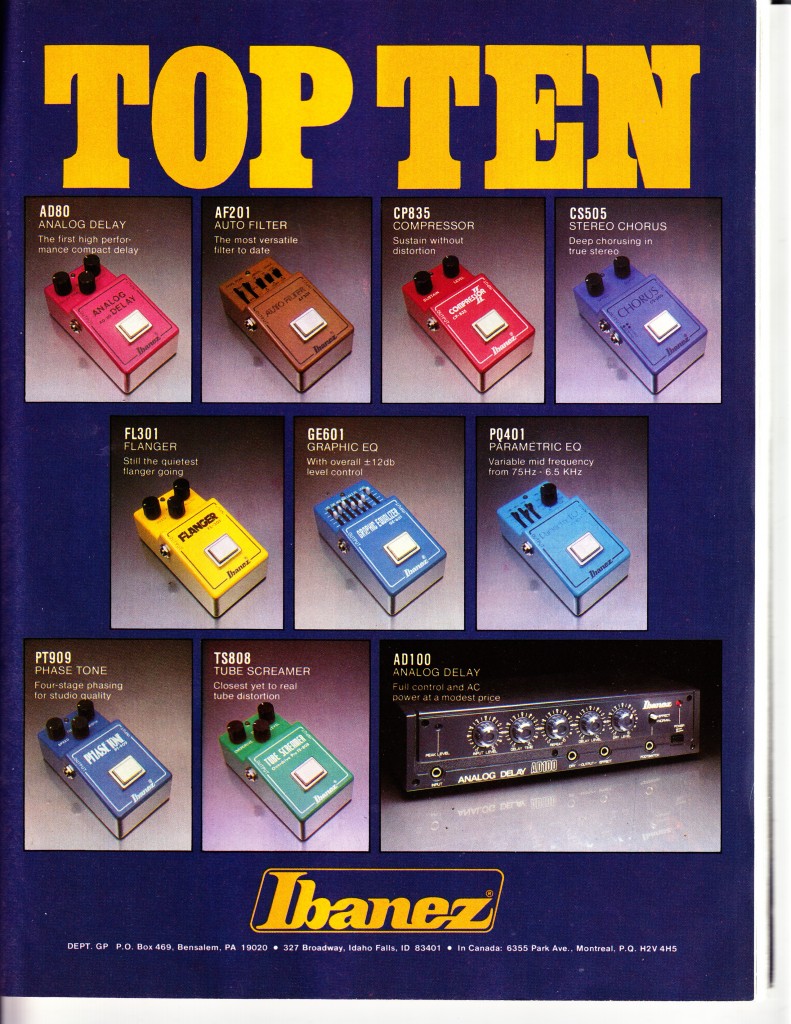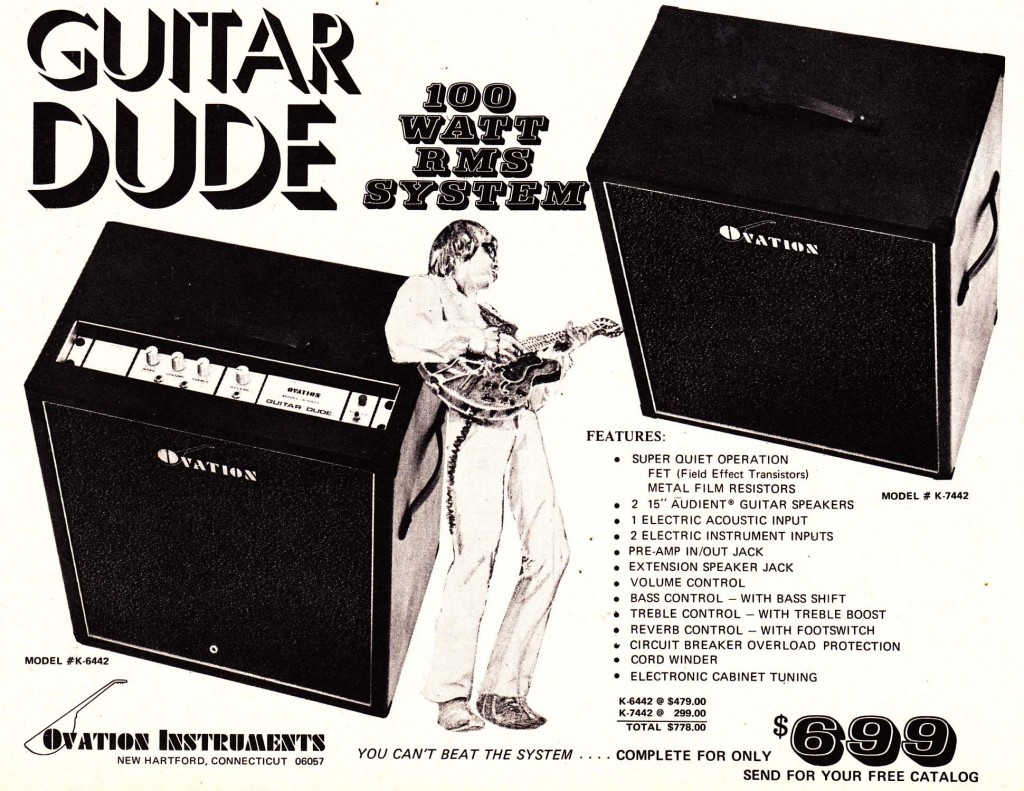 1971: Ovation instruments of New Hartford CT releases “the Guitar Dude,” a 100-watt 2×15 guitar amp.
1971: Ovation instruments of New Hartford CT releases “the Guitar Dude,” a 100-watt 2×15 guitar amp.
1972: Bread, the band that virtually invented lite-rock, releases the album and single ‘Guitar Man,’ one of the most melancholy songs ever written about the life of a rock musician, right there with Superstar and Turn The Page.
Who draws the crowd and plays so loud
Baby it’s the guitar man
Who’s gonna steal the show
You know, baby, it’s the guitar man
He can make you love
He can make you cry
He will bring you down
Then he’ll get you high
Somethin’ keeps him goin’
Miles and miles a day
To find another place to play
Night after night who treats you right
Baby, it’s the guitar man
Who’s on the radio
You go listen to the guitar man
Then he comes to town
And you see his face
And you think you might
Like to take his place
Somethin’ keeps him driftin’
Miles and miles away
Searchin’ for the songs to play
Then you listen to the music
And you sing along
You want to get the meaning
Out of each and every song
Then you find yourself a message
And some words to call your own
And take them home
He can make you love
He can get you high
He will bring you down
Then he’ll make you cry
Somethin’ keeps him movin’
But no one seems to know
What it is that makes him go
Then the lights begin to flicker
And the sound is getting dim
The voice begins to falter
And the crowds are getting thin
But he never seems to notice
He’s just got to find
Another place to play
Either way
Got to play
Either way
Got to play
